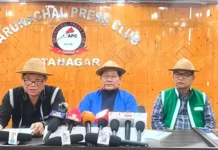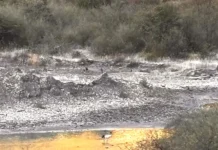MUMBAI, Feb 11: Arunachal’s environment & forests department received the eGovernance National Award for its ‘eForestFire – Himalayan forest fire prediction’ app.
The award was presented here on 8 February, during the national conference on eGovernance organised by the union personnel & administrative reforms ministry and the Maharashtra government.
The app project had been awarded by the union administrative reforms & public grievances department last year, when Dr Dr Abdul Qayum was posted as the district forest officer in Tawang. Dr Qayum, who is currently the Chandigarh deputy conservator of forests, had led the team that created the app.
The unique initiative has been taken to protect the forest areas and the wildlife of the state. With the help of geographical information system, accurate predictions of fire can be made at the rural level using the app.
“Information dissemination through the user-friendly mobile app, eForestFire, has not only reduced wildfires, it has also enabled strategic utilization of limited government resources and reduced the distance between the people and the administration,” informed Dr Qayum.
“An algorithm has been developed using technology to predict fire events in the coming year. Immediate notice of fire incidents and other forest crimes can be given to higher officials of the forest department. This unique initiative not only enhances the ability of the state forest department to deal with fire incidents but also ensures people’s participation in good governance,” he said.
Dr Qayum noted the significant contributions from Arunachal PCCF RK Singh and MP cadre officer Pradeep Mishra, and the technical inputs from Firoz Ahmad and Rakesh Arya in developing the app.
Reportedly, due to timely intervention and efficient information dissemination through the app, forest fire incidences reported this year were around 31 percent less, compared to the period before the start of the project.
The state has been able to save tremendous loss to the biodiversity, flora and fauna, human life and public property through this initiative.
“This same model can be utilized for any other state, especially all fire-affected states, as technology is scalable and its replica and adaptability is high,” Dr Qayum said.



